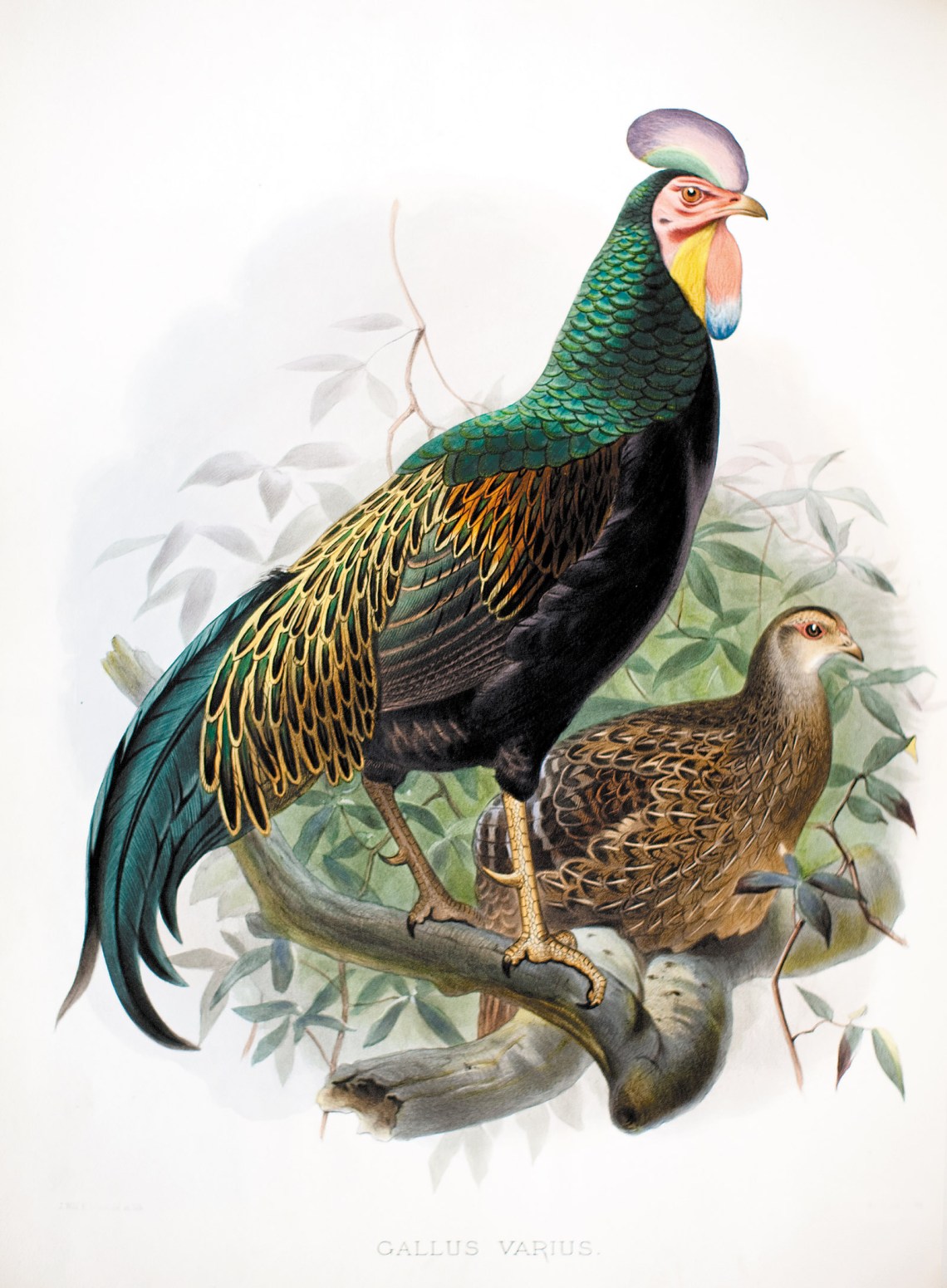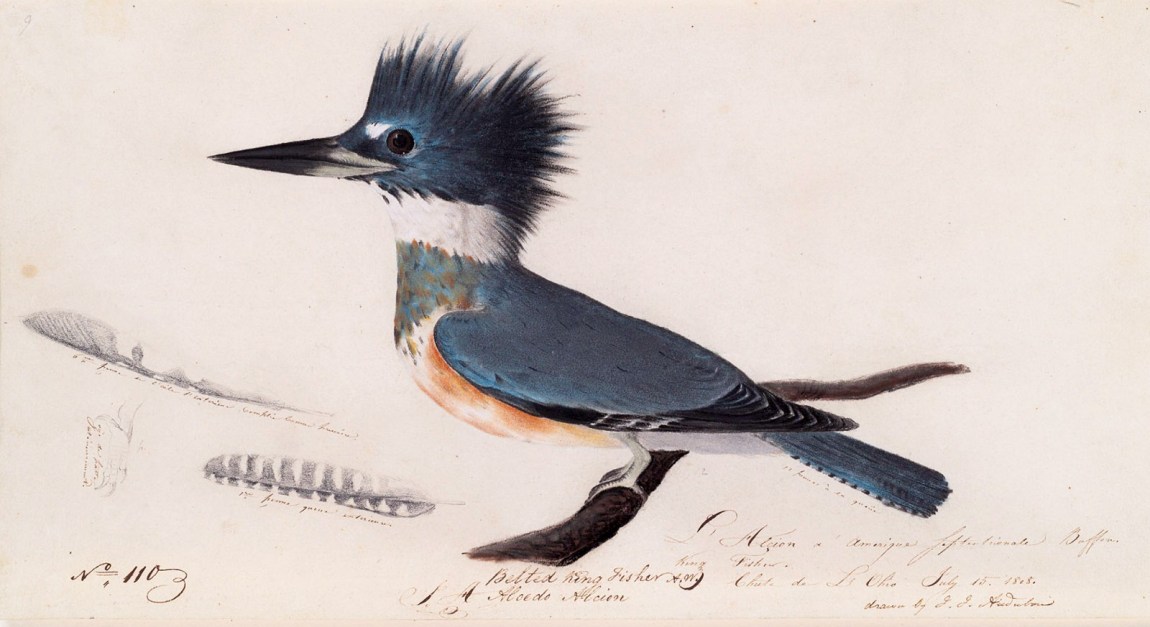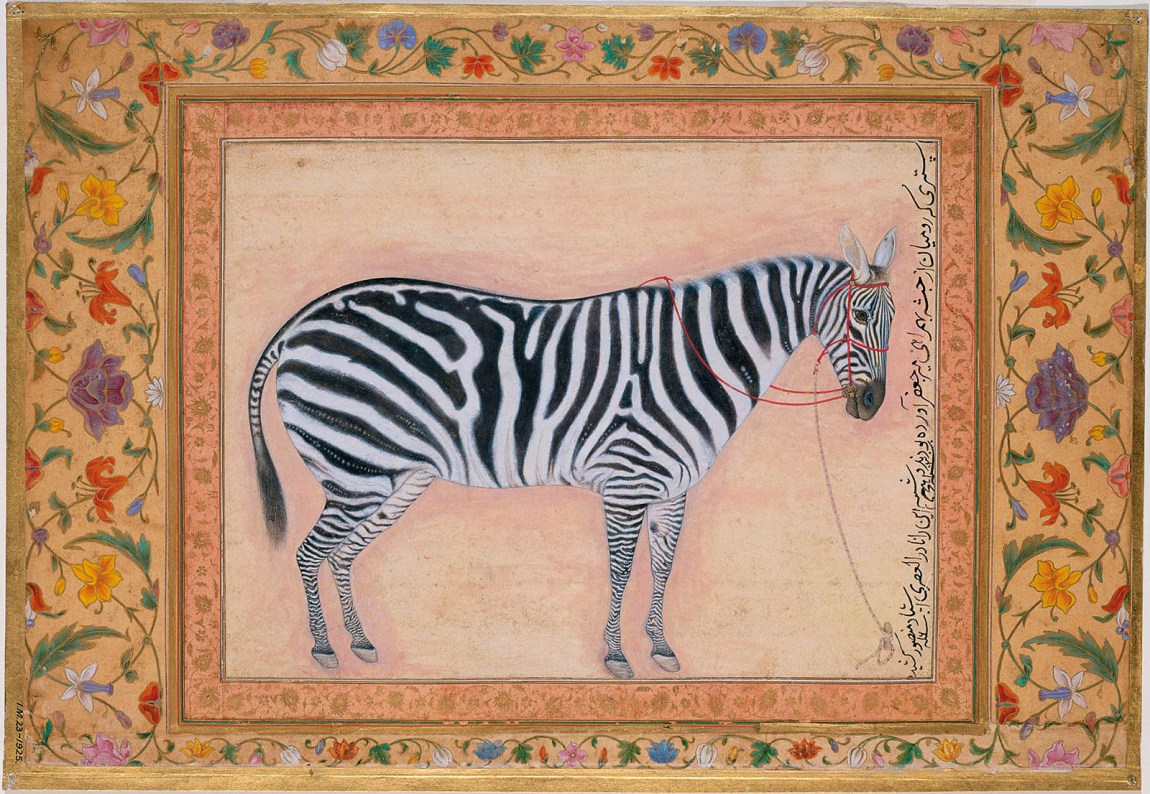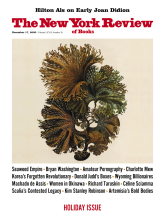For the past seventeen years, Reaktion Books has been publishing a series of volumes under the general rubric “Animal”—attractive duodecimos in uniform paperback editions, printed in color on heavy stock.1 There are ninety-eight of them so far, from Albatross to Zebra, by way of Bedbug, Leech, and Swan. I first came across the series in 2010, when an advanced reader’s copy of Camel showed up in my mailbox, a book whose outlook—arid and elliptically comic—seems at one with its subject. It’s hard not to like a profusely illustrated book that recommends Rose Macaulay’s The Towers of Trebizond, quotes the work of Al-Jahiz (“the Arab world’s greatest ever essayist”), and describes the sound that camel ticks make when tossed into the campfire. I’ve now read thirty-five of the Animal books. Not all of them live up to the standard of Camel, which was written by Robert Irwin. But the series shows no sign of flagging, and one of the best is also the most recent: Human by Amanda Rees and Charlotte Sleigh.
There’s something ark-like about this publishing project: Reaktion employs the category “animal” the way I imagine Noah doing as he loaded the boat. Take a pair of bats? Or take a pair of each of the world’s 1,400 species of bats? (The Bible is full of population bottlenecks.) It’s all a matter of perspective. A publication series with only three volumes—Archaea, Bacteria, Eukarya, one for each domain of life—would have been at once too limited and too broad. A series with a volume for every one of the estimated 8.7 million eukaryotic species—which include most of the familiar forms of life on Earth—would be hard to shelve and harder to sell, and since most of those species have yet to be discovered, very slow in the writing. So each Reaktion title is devoted to a different kind of animal—“kind” being a commonsensical, if unscientific, word that handily conflates the species within it.2 On the shelf, they all look the same, but Ant concerns (implicitly) some 11,000 species, Lion only one. These are the creatures of common usage.
Each volume in the series runs to about two hundred pages and includes nearly all the things that invite the phrase “a real book”: index, footnotes, acknowledgments, dedication, and a bibliography whose quality depends on the author (Sardine, superb; Turtle, tragic).3 And they remind the reader how complex the eye’s interaction with the page is, how much work we do, without noticing, while reading illustrated books. For instance, the Batman postage stamps reproduced in Bat are nearly actual size. But the original Audubon engraving of a pelican is vastly bigger than its half-page reproduction in Pelican. The Animal books are filled with images—“96 illustrations, 52 in colour” says the back cover of Human—and as the pages turn it would be wonderful to see the images magically expand and contract to their real, worldly dimensions. But they don’t (not even in the e-book versions). And so the eye darts in and out, back and forth from picture to text (where the eye is more or less natively at home), nearly always with a little ocular wistfulness, a wish that it could see more fully, more intricately, more majestically. Most of the illustrations illustrate. But many are so small that they merely provoke the desire to see.
If I were choosing a set of epigraphs for the entire Animal series, one would be from Italo Calvino, who says that in Pliny the Elder’s Naturalis Historia we find “the pleasure of recognizing the infinite variety of what is other than us.” The second would come from Amy Leach, who writes curiously effervescent essays about the natural world. In “Memorandum to the Animals,” from Things That Are (2012), she imagines a new ark. Unlike Noah’s, it carries only a few species in order to make room for the numerous mechanical conveniences of humans. Leach has some advice for the animals left behind, who will survive only in human memory. “To properly live on in the imagination,” she writes, “you should have someone who really knows you, who knows the pitch of your buzz, the rufous hue of your throat, your fondness for comfrey…” The third epigraph would come from André Gide in the Congo: “How fortunate the specialist!… If I had a second life, I could be happy spending it merely in the study of white ants.”
What these epigraphs have in common is something that unifies the entire Animal series: the fundamental presence of the human. Without the “us,” in Calvino, there is no “other than.” In Leach, abandoned animals will be preserved only in the minds of humans. And you can hardly help picturing Gide with a magnifying lens—a Gary Larson scientist in short pants examining an ant hill. If it isn’t entirely true that “animals are, in the end, a human invention,” as Christopher Plumb and Samuel Shaw assert in Zebra, the shared purpose of these books is nonetheless to see what we can learn not only about animals, “but about ourselves.” The underlying premise is that we go to the zoo to look at humans, or, at best, to look at humans looking at animals, which slip into the picture peripherally. When this anthropocentric approach works, the results can be revealing and instructive. But often you wind up in a quandary. “Where does one go, intellectually,” writes Alan Rauch in Dolphin, “after discussing dolphin-shaped vibrators?”
Advertisement
Many of the titles in the Animal series represent what you might call the popular front of the burgeoning academic discipline known as animal studies, which brings together many writers and philosophers—including Jacques Derrida (naked, being watched by his cat),4 Temple Grandin, J.M. Coetzee, and Donna Haraway—in theoretical language derived from comparative literature, queer studies, disability studies, and other fields. The spirit of the discipline is beautifully characterized—and I say this without shade—in a description of the rat by Jonathan Burt, the general editor of the Animal series (which would be called the Nonhuman Animal series if it adhered to common practice in animal studies). The rat, Burt writes, is “both fluid and boundary breaking.” It “constantly pushes at the edges of the borders set to contain it.” Moreover, rats “are doubly transgressive in the way they cross boundaries…and also embody those boundaries within themselves.”
The animal studies background may help explain the surprise of the reader who picks up Dog by Susan McHugh hoping to have a companionable canine read, and discovers instead that the modern system of dog breeds is part of a “taxonomic process” that “was inseparable from the imperialist politics it served.” And yet the variety of authors in this series also means a variety of perspectives. So, in Chicken by Annie Potts (like McHugh, a scholar in the field of animal studies), breed fanciers aren’t necessarily imperialist taxonomers. They’re people who are fond of chickens and a little obsessed with wattles, combs, and feathers.
All the books in the series devote at least a few paragraphs, sometimes a chapter, to the evolutionary history of the animal in question and its various species. But what they mainly offer is an account of the things humans have said (and made and done) about (and of and to) animals during the span of our existence—everything from prehistoric cave drawings of aurochs to the swallow tattoo on Johnny Depp’s forearm.
The general, if not uniform, approach is described by Martin Wallen in Squid. “To put it simply,” he writes,
I believe that earlier non-scientific accounts of squids should be read as sincere attempts to identify these creatures accurately. Every era and every culture describes the world accurately in the terms available to them and in accord with their beliefs and customs.
This is inherently respectful not of squid but of humans, a way of acknowledging a sort of truth-equivalence across different periods and among different cultures using different methods of knowledge, with which the findings of modern science are somehow presumed to coexist. Again, there are variations. Aristotle is inevitably regarded throughout the series as the pater familias of Western, nontraditional natural history. But when the entomologist Richard Jones points out that wasps do not swarm, he says, with a slight sting, “Even Aristotle knew this.”
These books draw endlessly on what is human because we have almost no idea how to draw on what isn’t human. The risk is a perpetually deepening entanglement with language and culture without ever coming near the existential world of creatures themselves. The silence of animals—toward us—has always troubled human beings. What we have to say about other species on this planet, not surprisingly, is completely out of proportion to what they have to say about us. This piques our vanity, and it blinds us to an important point. Culturally and linguistically, animals may, “in the end, be a human invention,” as the authors of Zebra claim. But in ecological, climatic, and evolutionary terms, we are the invention of animals.5
In the pool of genetic material that has constituted life on this planet, the human lineage is a thin and, so far, short-lived strand, intertwined and kinned with every other lineage. Our singular, solitary kind is utterly overwhelmed by the number of biological kinds that have preceded us and that surround us even now. We have always been afloat within and upon an immense ocean of other organisms, all of them coequal by the simple virtue of existing and having existed. And what we call human—the identity we try to locate in consciousness and intelligence and language—is erected, “in the end,” upon the animal within us.
Advertisement
The inherent familiarity of the Animal project—its reliance on species, like an alphabet book of the animals (A is for Aardvark)—means that very little is said about habitat. And even then the emphasis is on the human: our part in altering or destroying, for instance, the habitat of the polar bear or the gorilla or the Yangtze River dolphin, which became extinct in 2006. In a sense, this isn’t surprising—habitat is an intricate and unruly concept, unless it’s being used in an almost formulaic way, when it often sounds like something an animal possesses. (In Elephant, Dan Wylie writes, “Too many people have robbed the elephants of their historical habitat.”)
The very structure of the Animal series prevents the authors of its individual volumes from giving much space to the interconnectedness of species—not merely the direct interconnection between the wildebeest and the lion, for example, but something far more elaborate and harder for science to envision. There’s an endless insistence on the richness (and, often, perversity) of human culture in this series. But the richness of biological life on this planet is much harder to discern because we can view it only with the eye of one species looking through the lens of another.
And what if habitat isn’t merely the narrow, defining frame for a creature’s existence, a space that a species is conventionally said to “occupy”? What if it’s far broader and more intricate, rather than merely an essential backdrop in the diorama of life? Darwin outlined the basic feedback loop in evolution, but scientists are only beginning to understand the reciprocal complexity of habitat and species and genes. After all, there is no such thing as a solitary habitat, fitted to only a single species. Everywhere life occurs, the habitats of multiple species are layered one upon another, in ways that are hard to analyze but are intrinsic to the very nature of habitat, of life itself.
We can imagine another kind of layering too. Nearly every creature on this planet has a sensorium of one kind or another—ears, nose, antennae, statocyst, etc.—a means of detecting and orienting itself in its world. It’s impossible to imagine those sensoria and the kind of awareness they create in creatures as alien to us as the squid. (That’s the point of Thomas Nagel’s famous essay “What Is It Like to Be a Bat?”) It’s still harder to grasp the way sensoria overlap and intersect in the world around us. Does the bat notice the swallow while trading day and night shifts in basically the same niche? Who else hears whale-song? And what do we discover when we begin to imagine the overlapping of biological sensoria in any given life-space, or on the planet as a whole? This is a different realm of interconnection entirely.6
So it feels like a lack of imagination when, in Seal, Victoria Dickenson writes, “It is hard to imagine a creature more distant from the human species in bodily form, habits and habitat than the seal.” If Dickenson really believes that, then I’d like to introduce her to the female northern walkingstick (Diapheromera femorata) that appeared on my screen door in early September—an insect disguised as a four-inch twig with long antennae. The human world is full of plush, stuffed seals, but no one cuddles up to an upholstered toy resembling a northern walkingstick.
This is a difference the Animal series inevitably reflects. The better volumes seem to be the ones about animals that haven’t been wholly engulfed by human cultures and human thought. By “better” I mean that in them it is easier to find your way through the bric-a-brac of human stuff to the lives and characters of the creatures themselves. Thus Jellyfish is better than Penguin, Mosquito is better than Dolphin, and Kingfisher is better than Ant, which gets sidetracked by the disagreement between two renowned myrmecologists—Deborah Gordon and E.O. Wilson—who differ on the character of scientific research and on how rigid or flexible ant behavior really is.
Chicken is an exception. Few animals have been more wholly absorbed into human awareness (and use) than chickens, and yet Annie Potts helps us see them with new understanding. She explains the tiny adjustments that occur within a viable egg—the way the embryo positions itself, before hatching, to hear its own heartbeat and the sounds of the world outside the egg. And she gives the reader a vivid sense of how the world looks to chickens, which “can obtain a clear view of morsels immediately in front of them on the ground while simultaneously receiving a panoramic view of the more distant environment.” Plus, Potts notes, each eye is able to focus independently and at different distances, something you’ll want to remember the next time you try to catch a rooster on open ground.
Rees and Sleigh’s Human is the rare Animal volume that refers to the series in which it appears. The authors imagine an encounter between a human and an extraterrestrial. “Having read the other books in Reaktion’s Animal series,” they write, we would not “have an answer to the question of how we differ from it.” One reason is that no matter how good we are at defining other species, humans have a very hard time defining what it means to be human. Rees and Sleigh point out that whenever we try to approach a definition of who we are as a species, “the concept of humanity evaporates.” It’s a category “that has been defined by many things, almost all of them what it is not.”7
In the history of our species, we’ve habitually tried to fortify the border between human and nonhuman, building walls and guard posts at boundaries that are all too familiar: the ones created by differences in species, ethnicity, gender, nationality, and religion. The operative question—practically and philosophically—has always been, “Is X human?” For Rees and Sleigh, that question inevitably “dehumanizes us.” And so, in Human, they don’t try to define or even portray Homo sapiens. Instead, they explore the not-ness we have used to characterize ourselves. This may sound a little like describing a giraffe by its lack of resemblance to a goldfish. But if giraffes historically and pervasively thought of themselves as non-goldfish, there would be something in it.
Near the end of their book, Rees and Sleigh introduce an idea they call “imhumanism”—an awkward coinage derived from “immanence” and “humanism.” Think of it as a kind of ethical anthropomorphism, the attribution not of human characteristics but of humanity itself to nonhuman animals. The idea is a subtle one. It recognizes that “humanity can only ever be conferred, not grasped” and that there’s nothing static about conferring humanity. It doesn’t create a new and permanent status, nor does some kind of virtue accrue to the person doing the conferring. It’s ephemeral, needing constant renewal—and thus resembling the acts of genuine spiritual renewal that lie at the heart of religious practice.
“Humanity, if it exists at all,” the authors write, “exists in the fragile, fleeting act of conferral: in the realization of relationship with the Other.” There’s something paradoxical in this notion. It sounds at first like a universal extension of human concern, a kind of balm to be spread over animalkind. In fact, it’s something quite different. To explain, Rees and Sleigh quote a landmark article by Christopher Stone, published in 1972, called “Should Trees Have Standing?” Imhumanism depends on being able, in Stone’s words,
to reach a heightened awareness of our own, and others’ capacities in their mutual interplay. To do so, we have to give up some psychic investment in our sense of separateness and specialness in the universe.
It is this giving up—this coming down from the self-invented privilege of being human—that is so hard.
It’s impossible to read Reaktion’s Animal books without wondering what will become of the species they describe. After the pandemic began last winter, I thought that reading Owl and Jellyfish and Kingfisher and Shark would be a way of looking beyond the penumbra cast by the virus, which seems to be making us even more obsessively human than we usually are. Instead, the books suddenly felt as though they were full of saudade—the Portuguese longing for an absent one. But of course the saudade I was noticing lay in me. It was as though, in the world of animals, the absent ones—the ones that have been destroyed or gone extinct by human means—now felt doubly absent.
In the place where I write, I’m surrounded by birdsong in the spring and summer. But every bird—every bobolink, every catbird, every swallow—seems now to represent the billions of birds and other creatures that have been lost in my lifetime. I can no longer hear the present ones without also hearing the absent ones. The virus has made it worse simply because the present ones—the female wood ducks that land on our pond from time to time—seem farther away than ever before, denizens of some strange and poisonous world we used to call normal. Surrendering our separateness from nature, our specialness, has never been harder, but it has never been more important. Surrender it we must if the life on Earth that makes us human—that confers upon us our humanity—is to survive.
This Issue
December 17, 2020
An Awful and Beautiful Light
A Well-Ventilated Conscience
The Oldest Forest
-
1
Reaktion has republished a few of these titles—Dog, Crow, Owl, Falcon, etc.—in a much more conventional and less pleasing paperback format with black-and-white illustrations. ↩
-
2
There’s a strange overlap between Turtle by Louise M. Pryke (to be published in 2021) and Tortoise by Peter Young. No clear distinction is made in either book between “turtle” and “tortoise” because, scientifically speaking, there is none. There is also quite a lot of toad in Frog. ↩
-
3
All that’s missing is a colophon, that page where we learn something about the printer and the typeface—even the history of the typeface. ↩
-
4
This quotation from Derrida’s The Animal That Therefore I Am (Fordham University Press, 2008) is practically a founding statement in the field: “Caught naked, in silence, by the gaze of an animal, for example, the eyes of a cat, I have trouble, yes, a bad time overcoming my embarrassment.” ↩
-
5
And of all the other nonanimal organisms on the planet. “Invention” is, of course, a wild overstatement. It implies specialness and purpose of a sort that has no basis in fact, either in human discourse or evolutionary theory. ↩
-
6
In a way, it resembles an analogical and secular version of the concept of perichoresis—the revolving interrelation between the three persons of the Christian trinity, a dance-like reciprocity into which humans cannot enter. Thanks to my friend Emily Boring, evolutionary biologist and Yale divinity student, for introducing me to this term. ↩
-
7
Hence, a certain irony in the phrase “nonhuman animal.” ↩






